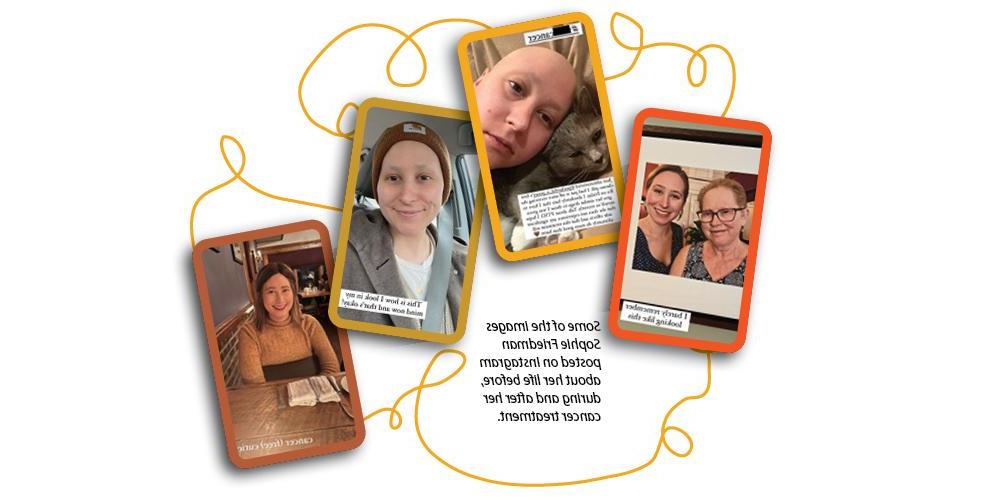For her, survival means starting anew
BY AMBER SMITH
Many people see two outcomes for someone in cancer treatment, says Sophie Friedman. Either the person dies, or the person gets better, and their life returns to normal.
Especially for those who face cancer treatment as young adults the way she did, there is no normal to go back to, she points out.
Friedman, 32, of Fayetteville is a librarian and archivist by training, with a master’s degree in library and information science. She returned to Central New York during the pandemic and embarked on a new career as a project manager with a tech company.
Her cancer began as a quarter-sized blue mark on her arm, almost like a bruise, except it wasn’t flat. It did not hurt, but she could move the mass beneath the skin. A primary care doctor told her not to worry — which she tried to abide by — and to return in six months if the mark was still there. A month later she decided to have it reevaluated. Something about it felt off.
An ultrasound image of the mass revealed it to be a complex cyst, meaning it was comprised of tissue and blood. The doctor offered two options. She could have a magnetic resonance imaging scan and a biopsy to find out what the mass was made of. Or she could have it surgically removed.
Friedman opted for surgery, which was done in February 2022. Lab testing showed the mass was Ewing sarcoma, which usually is found in children and adolescents. A diagnosis in someone in their 30s was rare. “Friedman’s surgeon referred her to Upstate orthopedic oncology surgeon Timothy Damron, MD, an expert in cancers that occur in the limbs.
After six rounds of chemotherapy, she underwent a second surgery to remove more tissue. Then she had an additional eight rounds of chemo, sometimes requiring hospitalization. Her chemo was a regimen including five medications. She began connecting with other young adult cancer survivors on social media and decided to share her experiences on Instagram and TikTok.
“At first I didn’t share a lot, but the more I shared, the more I felt empowered, and the more I felt like I was advocating for myself and other people,” she explains. “Not only was I connecting with other people in similar circumstances, but I was also educating the people in my life who knew nothing about this.”
She never photographed the blue mark, which people on social media constantly ask to see. She has a fairly extensive scar there now. She considers herself lucky. Ewing sarcoma usually occurs in the bone and requires amputation or bone replacement surgery. Her tumor was confined to soft tissue. It was so close to the surface that Damron did not have to remove muscle or do a skin graft.
Her active treatment is over. She’s technically a survivor. But it’s a tough role. She wrestles with fear of recurrence, fear of a secondary cancer, survivor’s guilt, side effects now and longer-term side effects, physical and mental exhaustion, depression, anxiety and more.
“It’s awful. I won’t lie,” Friedman says. “In some ways, this post-treatment era is harder in a psychological and emotional sense than going through treatment.”
Weeks after Friedman’s treatment ended, her cat, Posey, was diagnosed with small cell lymphoma affecting her gastrointestinal tract. The cat is on a special diet now. She also has a vitamin injection every week and a chemo pill every other day. Friedman frets about giving Posey drugs so similar to the ones she had to take.
Survivorship feels impossible for her, some days. Some days she’s anxious. Some days she’s depressed. She does have days where she feels normal, where she doesn’t think about cancer. Friedman is grateful her treatment worked, that she’s in remission. She would like people to understand that for young adult cancer survivors, there’s no going back to a previous life before cancer.
“Our lives are changed forever. We are new people,” she says.
This article appears in the summer 2023 issue of Cancer Care magazine.






